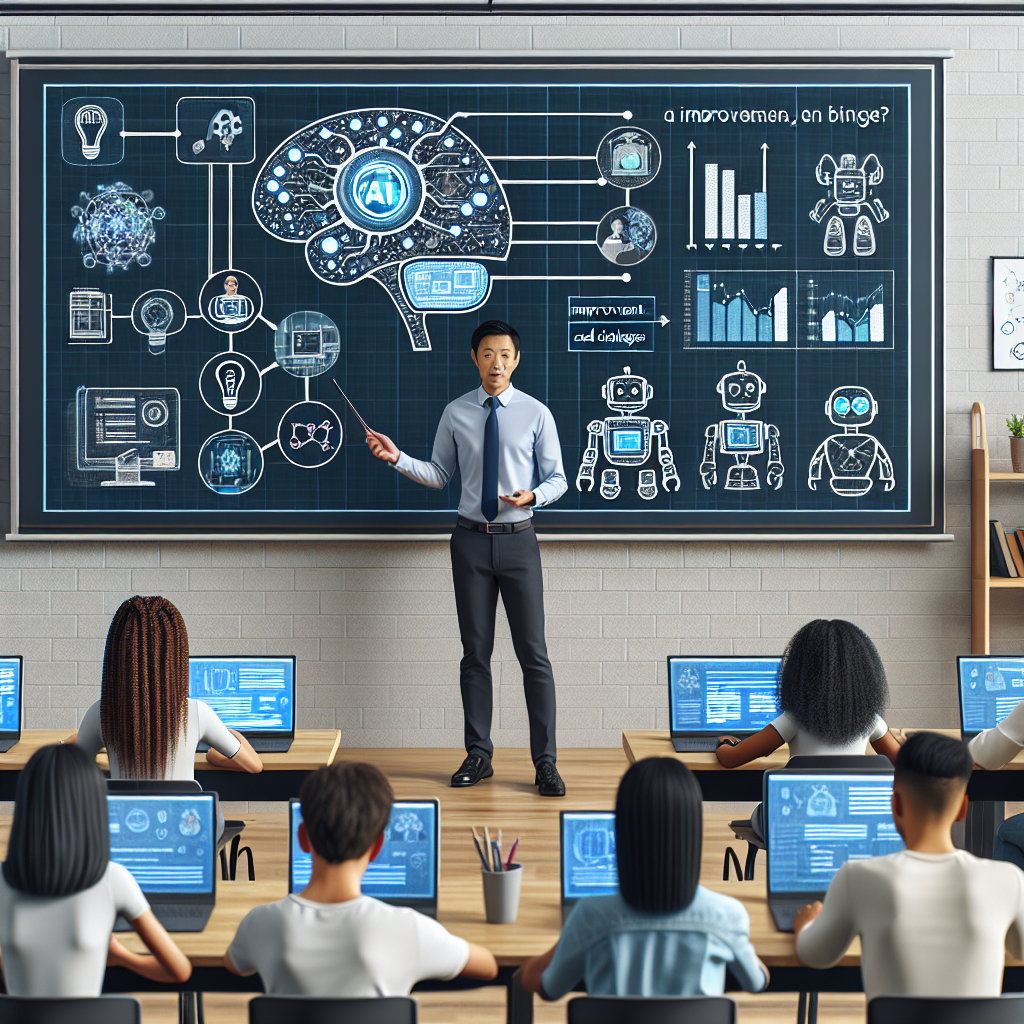AI in Education: Transformative Use Cases, Success Stories, and Challenges

```html
Artificial Intelligence (AI) is increasingly being adopted in the education sector, profoundly changing how students learn and how educational institutions operate. From personalized learning experiences to administrative efficiency, AI offers numerous benefits. However, its integration is not without challenges. In this blog post, we'll examine various use cases of AI in education, highlight success stories, and discuss the lessons learned from the challenges encountered.
Personalized Learning
AI is making personalized learning a reality. Tools like DreamBox and Smart Sparrow use machine learning algorithms to adapt educational content to a student's individual learning style and pace. This personalized approach helps students grasp concepts more effectively and keeps them engaged.
However, implementing AI in personalized learning comes with its own set of challenges. A school district found that while AI tools worked well for most students, they struggled to address the needs of special education students. This highlighted the necessity for adaptive algorithms that can cater to a broader range of learning needs.
Automated Grading
AI is streamlining the grading process, saving educators valuable time. Platforms like Gradescope and TeachFX use AI to automatically grade assignments, quizzes, and even complex essays. This not only reduces the workload for teachers but also provides students with faster feedback.
Yet, automated grading systems can face skepticism. A university encountered resistance from both teachers and students when the AI system made grading errors, particularly in subjective assessments like essays. This showed the importance of incorporating human oversight to review and correct AI-generated grades.
Virtual Tutoring
AI-powered virtual tutors are revolutionizing the way students receive help outside the classroom. Tools like Khan Academy and Squirrel AI provide on-demand tutoring, answering student questions and offering additional practice problems. These virtual tutors can provide instant, personalized assistance, making learning more accessible.
Despite their advantages, virtual tutors can fall short in some areas. A study revealed that AI tutors sometimes offered incorrect solutions or explanations, leading to confusion among students. This emphasized the need for continuous updates and rigorous testing to ensure the accuracy of AI tutoring systems.
Predictive Analytics for Student Performance
AI is helping educators predict student performance and identify those at risk of falling behind. Platforms like BrightBytes and IBM Watson Education analyze student data to provide insights into academic performance, enabling early intervention and targeted support.
However, predictive analytics must be used carefully. A school district faced challenges when their AI model incorrectly flagged some high-performing students as at-risk, causing unnecessary concern. This highlighted the need for ongoing evaluation and refinement of predictive models to enhance their accuracy and reliability.
Administrative Efficiency
AI is also improving the efficiency of administrative tasks in educational institutions. AI tools like Kira Talent and AdmitHub automate processes such as admissions, enrollment, and student support, freeing up staff to focus on more meaningful tasks. This leads to a more streamlined and effective administrative workflow.
However, reliance on AI for administrative tasks can raise concerns. A university experienced issues when their AI-driven admissions system had unintentional biases, disadvantaging certain applicant groups. This underscored the importance of regularly auditing AI systems to ensure fairness and inclusivity.
The Future of AI in Education
The future of AI in education is bright, with advancements expected in areas such as augmented reality (AR) and virtual reality (VR) learning experiences, AI-driven research tools, and enhanced remote learning platforms. AI's capabilities in data analysis, personalization, and automation will continue to drive significant innovations in education.
To fully leverage AI’s potential, it is crucial to address ethical considerations, ensure data privacy, and balance AI technology with human oversight. Collaboration between educators, technologists, and policymakers will be essential to promote responsible and effective AI use in education.
In conclusion, AI is transforming education through personalized learning, automated grading, virtual tutoring, predictive analytics, and administrative efficiency. Success stories from tools like DreamBox and Gradescope showcase AI’s potential, while challenges underscore the need for continuous refinement and ethical practices. As AI technology advances, its role in education will expand, offering new opportunities for innovation, efficiency, and enhanced learning experiences.
```



